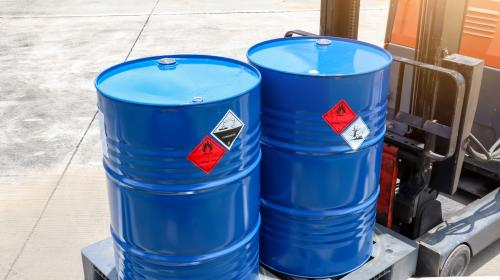Industrial Paint Disposal
What does your business do with its empty paint cans, leftover paint, and paint-related rags? Does your business test its paint and coatings waste products to make sure they are not hazardous? What measures does your company take to make sure its industrial paint disposal practices are acceptable and compliant with local, state, and federal laws? If you aren’t sure about the answers, it is time to review your company policy and practices surrounding paint and coatings along with checking into your state’s regulations for making the proper identification and managing hazardous waste and industrial paint disposal – see Wisconsin’s “Waste Determination & Recordkeeping Regulations” here – or risk heavy fines.
Commercial Paint Disposal: Affected Industries
Many manufacturing businesses, particularly organic manufacturing businesses, deal with paints and coatings and must be aware of their hazardous waste generator status. Types of industries and businesses that should have an industrial paint disposal and coatings management plan in place may include contractors; auto collision repair shops; metal fabricators; wood finishers; companies dealing with airplanes and marine vessels; building construction, demolition, and renovation; paint preparation and painting; furniture manufacturing; art departments such as universities; and other commercial activities. The list of businesses that deal with paints and coatings is extensive, so the first step to being in compliance is knowing the types of waste your company is generating.
Is Paint A Hazardous Material?
A hazardous waste is defined as “a discarded solid, semi-solid, liquid, or contained gas that can be described as follows: Because of its quantity, concentration, or its physical, chemical, or infectious characteristics, it poses a present or potential hazard to human health or the environment when improperly treated, stored, transported, disposed, or otherwise managed.” What types of materials can pose potential hazards? According to the EPA’s RCRA regulations, a waste can be hazardous if it possesses any one of four hazardous waste characteristics: ignitability, corrosivity, reactivity, and toxicity.
So, how do you know whether your paint or coatings match these descriptions? Though many paint and coatings waste products are classified as non-hazardous, there are some circumstances where industrial paint disposal is necessary. Some paint and coatings formulations may contain toxic metals (mercury, lead, chromium, cadmium, etc.) that will cause the waste paint to be classified as hazardous. Other paints and coatings can be regulated as hazardous because of their ignitability, like oil-based paints, or if they’ve been mixed with spent solvents. Though rare, some paints may contain heavy metals that would render a paint and contaminated filters toxic hazardous, including arsenic, barium, cadmium, chromium, lead, mercury, selenium, and silver. Keep in mind your state’s regulations may be stricter than federal rules, so review your state’s requirements closely (check out Wisconsin’s here and also here). Also, according to RCRA regulations, some types of paint require specific handling according to where they came from. See page 8 of the EPA’s guide here for these special circumstances.
Contact the experts at Envrio-Safe today to help you take the right steps toward proper industrial paint disposal.
Read part II, Handling Paints and Coatings Waste from Your Business: Part II, for the 3 easy steps your company should take to make sure it handles its paints and coatings waste products correctly.



